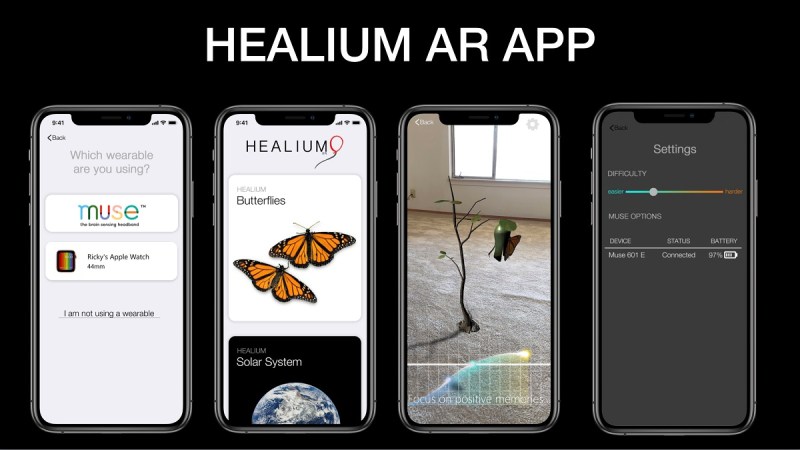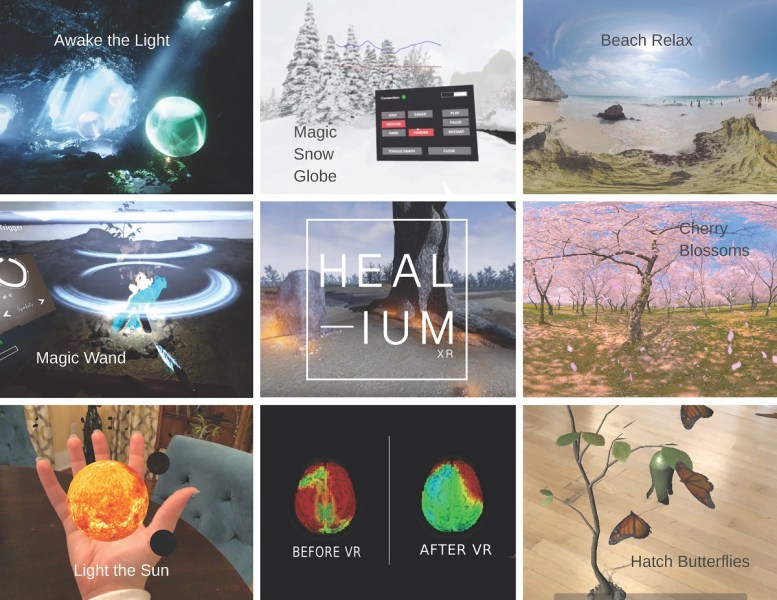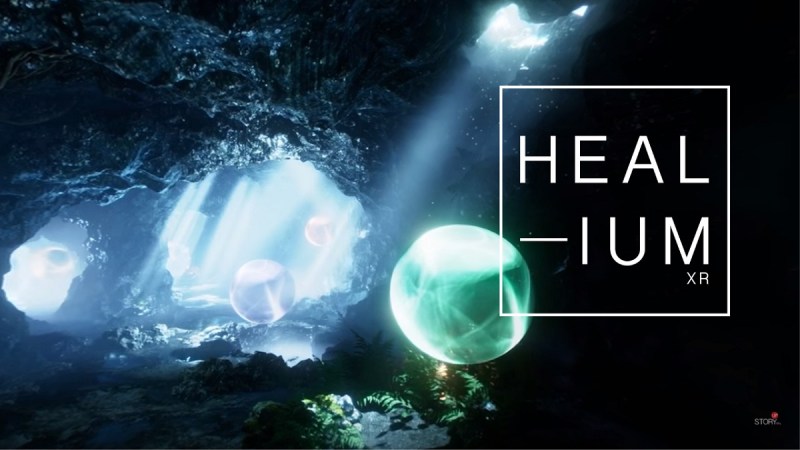Healium is a platform that uses virtual reality, augmented reality, and wearables like the Apple Watch to reduce anxiety. In peer-reviewed studies, it has been shown to quickly reduce moderate anxiety and increase feelings of positivity.
It’s the brainchild of Sarah Hill, CEO and chief storyteller for StoryUp Studios, a Columbia, Missouri-based startup that aims to heal people with Healium. The company has raised $1.3 million in funding, and Tinder founder Sean Rad joined the company’s advisory board.
Hill was a television news reporter for more than 20 years, accustomed to seeing dead bodies, covering conflict and natural disasters such as the tsunami in Sri Lanka in 2004, and listening to police scanners for hours at a time. But in 2009, she lost it.
She thought she was having a stroke, and her husband drove her to the hospital, but the doctors could find nothing wrong. After several more trips, Hill had to confront the possibility that she was having panic attacks, driven by anxiety. Anxiety is no small matter, and the World Health Organization has officially recognized burnout as a medical condition. Healium aims to address this condition by helping you manage anxiety.
June 5th: The AI Audit in NYC
Join us next week in NYC to engage with top executive leaders, delving into strategies for auditing AI models to ensure fairness, optimal performance, and ethical compliance across diverse organizations. Secure your attendance for this exclusive invite-only event.
“It allows you to control [images] with thinking or lowering your heart rate,” Hill said. “If you lower your heart rate, you get an environmental response. So instead of just watching this media, you’re actually feeling it and have a sense of control over your environment. It gives users the sensation that their thoughts have the power to control things not only in the virtual world, but in the real world as well. It’s a metaphor that you do have control over your world, not just inside these goggles but in the real world as well.”
“After decades of me choosing to consume information high in negative fiber, it took a couple of trips to the hospital to understand my media diet was, in fact, making me sick,” she wrote in a post on Medium. She saw a psychologist, Jeff Tarrant, who used neurofeedback to treat her so she could calm herself and regain the ability to sleep. She also told herself stories to help “cool her jets” and rest.
This became the foundation of Healium. In 2013, Hill exited the news business and began work on virtual reality applications at a nonprofit called Veterans United.

Above: Healium AR uses neurofeedback to power virtual worlds and reduce anxiety.
“We developed a program called Honor Everywhere that used AR and VR to do virtual tours of veterans’ memorials in Washington, D.C. for terminally ill or aging veterans unable to physically travel,” Hill wrote. “After thousands of VR tours and other demonstrations, we noticed the immersive stories we created appeared to be affecting users’ physiology. The user would raise their hands beyond what their caregivers thought possible. I would watch as their breathing slowed. Repeatedly, they appeared to relax while wearing the goggles.”
At StoryUp Studios, she combined VR with neural feedback to help calm people suffering from anxiety. She teamed up with Tarrant (chief science officer at StoryUp) to come up with immersive stories, neuromeditation, and calming imagery to help people relax. The two launched their startup in 2015.
“You can essentially power these experiences with your biometric data. It started from my own struggles with anxiety and panic attacks as a reporter,” Hill said in an interview with VentureBeat. “As you know very well, you have to cover things that are horrific. People who have lost children. We covered the aftermath of the tsunami, and I did not take care of myself. I didn’t have a self-care tool. So we created Healium.”
Using the Healium app

Above: Healium uses imagery to help you relax.
The team started with VR, expanded to augmented reality on a smartphone, and then combined it with the Apple Watch. I’ve used the Healium app for the Apple Watch to control my breathing. You tap the Healium XR logo on the watch to begin a session. You point your iPhone camera at a flat service and start. You can choose images of butterflies or the solar system. I chose butterflies.
Soothing music begins. You see a small plant with some branches and a few leaves. It has a chrysalis hanging from it. On the bottom, a chart shows your heart rate in real time. You try to relax so the heart rate stays low and below the line. To do that, I had to take deep breaths, stay still, and clear my thoughts. It worked fine, and my heart rate fell. A butterfly emerged from the chrysalis and flew around.
“Healium is a drugless solution to become more self-aware of your emotions. Because you have the ability to see and control these virtual worlds via your electricity, if you will, that comes from the wearables from your forehead or from your wrist via an Apple Watch.”
In the VR version, you can see scenic images that are peaceful. It’s sort of the opposite of closing your eyes to meditate. Healium uses eyes-open treatment with imagery that is meant to convince you that you are safe.
“There’s a brain pattern associated with feelings of positivity, called gamma asymmetry,” Hill said. “If … this particular brain pattern is being emitted from your forehead, then butterflies will hatch out of this augmented reality chrysalis. And they’re all easy-to-remember stories, meant to be simple so that you can then recall that story about … the butterflies when you get into a stressful situation.”
Peer-reviewed studies

Above: Healium lets you see things that make you relax.
Hill said that Healium has been shown (in studies here, here, and here) to reduce moderate anxiety by a third and increase feelings of positivity quickly, in as little as four minutes. Healium is unique because it’s a drugless, digital solution for the self-management of anxiety. It also harnesses the power of the body’s natural electricity to “heal” or change virtual worlds.
These biometrically driven stories are powered by your own brain patterns and heart rate via a smartwatch or brain-sensing headband. If the user’s feelings of the open heart or quiet mind are meeting a threshold, the virtual environment responds to your biometrics in a beautiful way. Hill is a storyteller, and Healium is designed as a storytelling medium because the brain can remember stories better than almost anything else. One mother said she used Healium to stop her daughter’s panic attack.
Built with ARKit and ARCore and the Unreal Engine and Unity, Healium AR is a subscription app that costs $5 a month. It’s available on iOS and Android and is also available on the Oculus Store in VR. It helps to use a wearable, but it’s not required. Healium VR is $29 a month.
Hill said the company has generated more than $800,000 in revenue to date. The app has been used by the U.S. Navy, where sailors sometimes don’t see nature for months. The company has a number of issued and pending patents. As for her own mental health, Hill said she is doing well.
“That [struggle with panic attacks] was years ago. I’m fine now. I don’t have any problems at all and am not on any medication,” Hill said.

